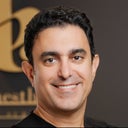Posted underEyelid Surgery q&a
Eye Shape Change After Car Accident, Scarring Around and in Eye Lid, What Revision Can Be Done?
3 and half months ago I asked a question regarding my scar that was wrapped around my eye after hitting the steering wheel of my car. The doctors said there was a cheek bone fracture, but it was relatively clean, and that I had a possible orbital blowout. The lower and upper eyelid appear to have changed and it looks like I have a smaller eye, also the upper eyelid scar is effectively acting as the crease/fold in my eye lid. It looks like ptosis, but I thought that was just upper lids...
Answers (4)
From board-certified doctors and trusted medical professionals
Dr. Kenneth D. Steinsapir, MD

Dr. Kenneth D. Steinsapir, MD
Oculoplastic Surgeon, Board Certified in Ophthalmology
Answer
Dr. A.J. Amadi, MD

Dr. A.J. Amadi, MD
Oculoplastic Surgeon, Board Certified in Ophthalmology
Answer
Dr. Sam Goldberger, MD
Dr. Sam Goldberger, MD
Oculoplastic Surgeon, Board Certified in Ophthalmology
Answer
Dr. Barry L. Eppley, MD, DMD
Dr. Barry L. Eppley, MD, DMD
Board Certified Plastic Surgeon
Answer
More Eyelid Surgery Questions
See all Eyelid Surgery Q&AWE SEND PRETTY
EMAILS
What’s trending? Who’s turning heads? Which TikTok myths need busting? We’ve got you. No fluff, no gatekeeping—just real talk. Get our free, unfiltered newsletter.